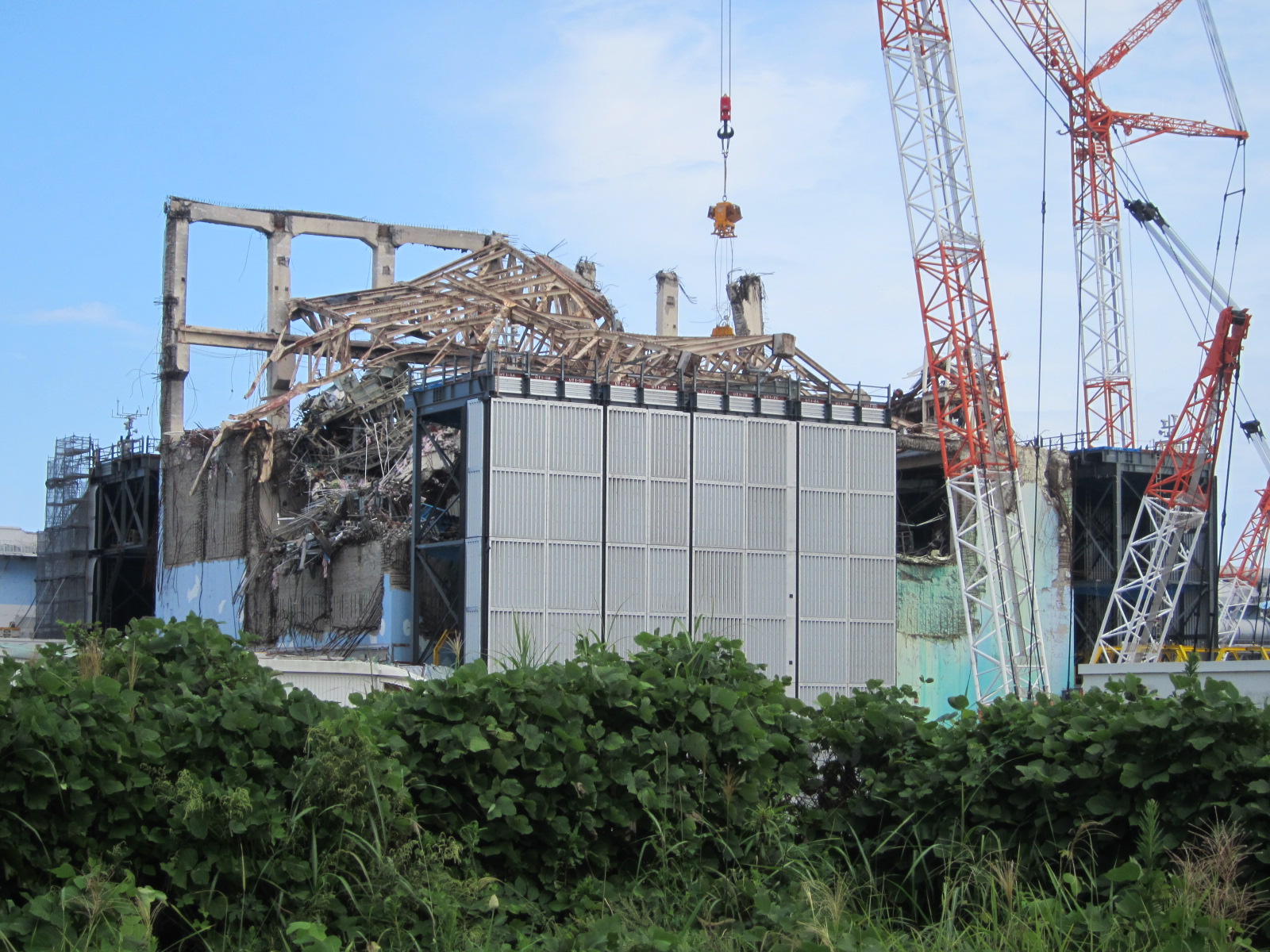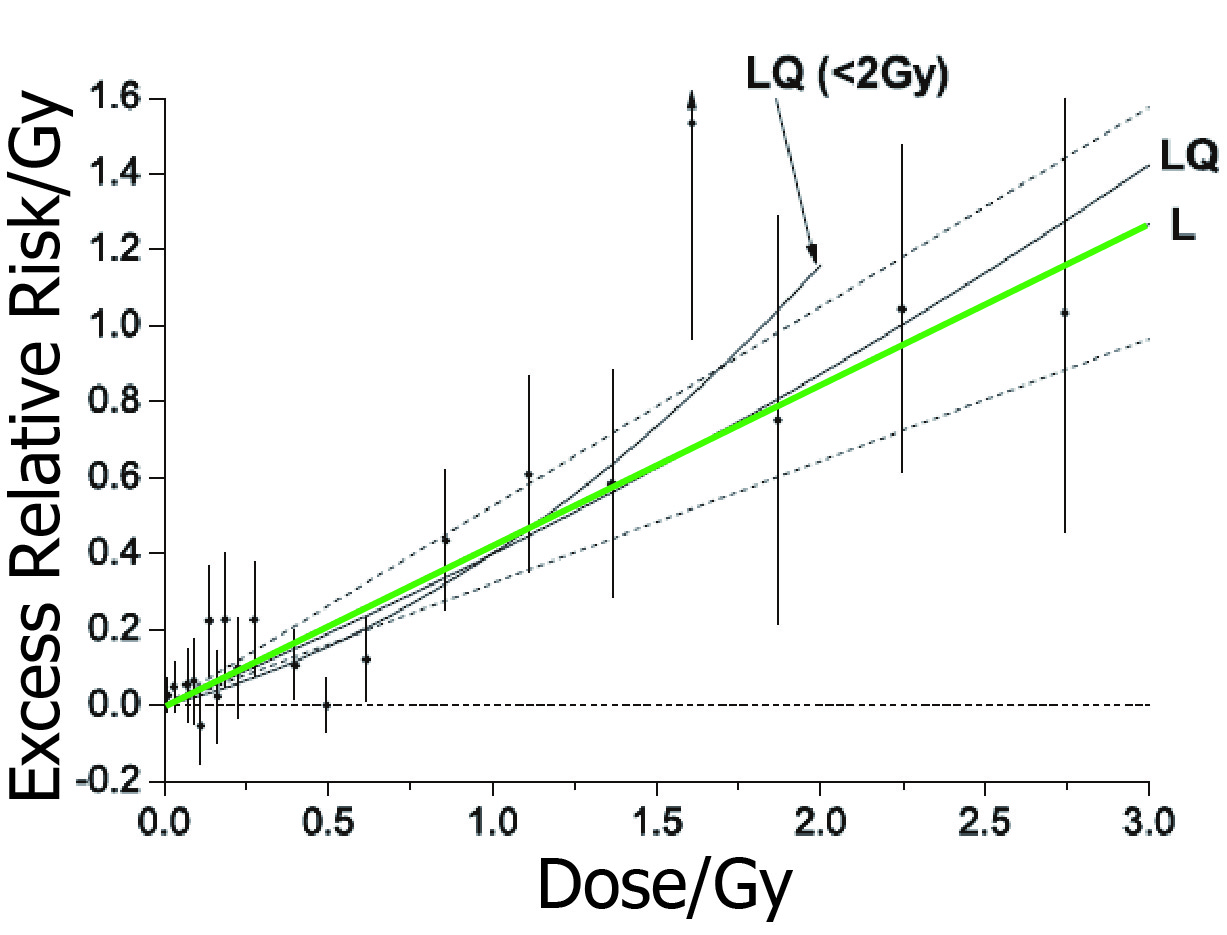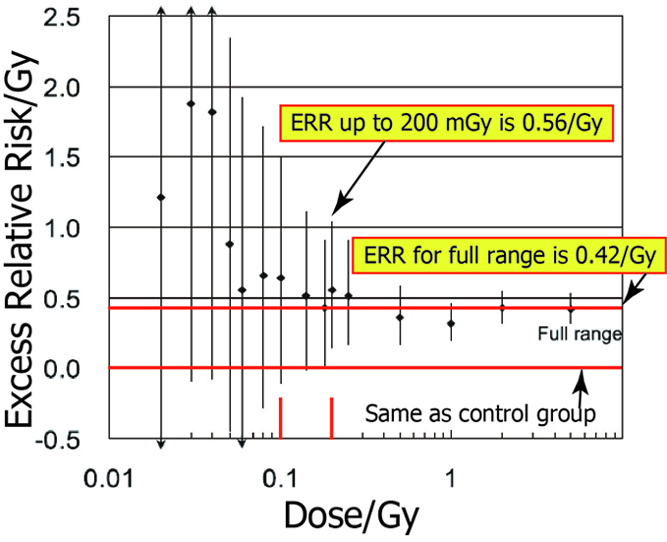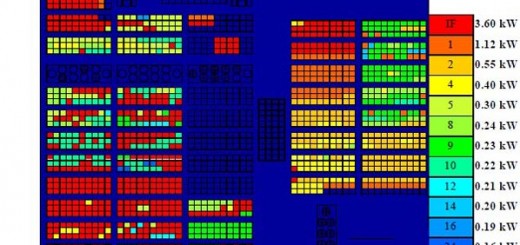What was clarified by The National Diet of Japan Fukushima Nuclear Accident Independent Investigation Commission? Nuke Info Tokyo No. 151
– Focusing on low-level radiation exposure risk –
 |
|
Fukushima Daiichi Unit 3 on Sept. 2012, Photo by TEPCO
|
It is now more than three months since the Fukushima Nuclear Accident Independent Investigation Commission (NAIIC) report was submitted to the government. The NAIIC, given the unanimous approval of all Diet members, was the first investigative commission to be set up by the Diet in the history of constitutional politics, and consisted of ten members under Chairman Kiyoshi Kurokawa. The basic stance of the commission was that this was an investigation emphasizing independence, thorough disclosure of information, human safety, and a future-orientation that would result in the carrying out of recommendations. I think that it was indeed due to the unstinting cooperation of a large number of collaborative investigators and the secretariat supporting the investigatory activities of the members that enabled this important investigation to be carried out and the report prepared in the very short time of six months.
The introduction to the report makes the important points that “the Fukushima Nuclear Power Station accident is not yet over” and “this was a man-made accident” – these conclusions were completely obvious to those who have been critical of nuclear power. As our investigation had national political investigative powers that allowed us to have access to the internal records of government authorities and the power companies we were able to back up those points with actual evidence.
We found that the Nuclear and Industrial Safety Agency (NISA), the Nuclear Safety Commission (NSC) and other regulatory authorities had relaxed their activities due to pressure from the Federation of Electric Power Companies (FEPC), of which TEPCO is a central player. They not only failed to perform their original duties, it became clear that they had abandoned their declared purpose of defending the health of the nation. For example, whenever citizens made claims that were backed up by irrefutable evidence, the bureaucrats invariably turned a deaf ear to them and sided with NISA, NSC, the Ministry of Education, Culture, Sports, Science & Technology (MEXT) and other authorities. There must have been many citizens who experienced a sense of futility to the extent that they felt the bureaucrats didn’t understand what they were talking about. The cause of this was that the regulators were captured by the power companies and had thus forfeited their responsibility of placing top priority on the lives of the people of the nation. This is truly an insult to the people, and even now, at a time when we still cannot see when the accident will be brought under control, this situation remains unchanged.
Is Exposure to low-dose radiation (below 100 millisieverts) safe?
 |
| Figure 1. Relationship between dose and excess relative risk of death from cancer (see reference 5) |
In the investigation into health effects of the accident, the topic I was mostly responsible for in the NAIIC, the forecast was that there would be negative effects in the future. Predicting what kind of effects will appear and then implementing preventative measures is an important area of concern. The key to this is how we evaluate radiation exposure risk. Even after it was clear that large amounts of radioactive material had been released into the environment and that food had been polluted, the then Chief Cabinet Secretary Yukio Edano repeatedly stated that, “the radiation level will not have an immediate impact on health.” The Fukushima Prefecture Radiation Health Risk Management Advisor Shun’ichi Yamashita toured Fukushima Prefecture giving talks in which he stated that“up to 100 millisieverts (mSv) is safe,”(1) and the NRC, although later withdrawing the statement, also claimed that there would be no effect on health from a dose of 100 mSv. The Cabinet Secretariat’s Working Group on Risk Management of Low-Dose Radiation Exposure (WG) also stated in a report(2) released in December last year, “… The risk of cancer at an exposure to a dose below 100 mSv is so small that it would be masked by the carcinogenic impact of other factors, and it is difficult to prove a clear increase in carcinogenic risk from radiation. Nevertheless, from the standpoint of radiation protection, even exposure to low doses of radiation below 100 mSv, based on the notion of standing on the side of safety, where risks are considered to increase linearly with dose, measures to alleviate exposure risks should be adopted. The health risk from an exposure of 20 mSv per year, the criterion for the current evacuation directive, is of a sufficiently low level when compared with the risks from other carcinogenic factors.”
The “notion of standing on the side of safety, where risks are considered to increase linearly with dose (the linear no-threshold model, LNT model)” as used by the Working Group is factually mistaken. The reason why the LNT model was adopted by International Commission on Radiological Protection (ICRP) is not because of “standing on the side of safety” but because it is based on science. As some members of the Working Group are also members of the ICRP they should be aware of that. The National Academy of Sciences committee on Biological Effects of Ionizing Radiation (BEIR) says that the LNT model does not contradict the scientific evidence indicated by recent research.
Thus it is no coincidence that many more statements underestimating the risks of low-level radiation have been made repeatedly in this way since the accident than before it. If one evaluates the risks from the standpoint of the internationally agreed “no safe radiation dose,” then it would be necessary to take immediate measures for the protection of the health of the residents living in the contaminated areas, as well as to further reduce radiation standards for food. It was very convenient for the government and TEPCO to decide that “the health risk from an exposure of 20 mSv per year, the criterion for the current evacuation directive, is of a sufficiently low level when compared with the risks from other carcinogenic factors,”(2) because, the number of schools that could be reopened, as well as the number communities in which no countermeasures needed to be taken, was significantly higher than if the exposure limit was set lower.
Basic research on low-level radiation – Proof of risk from epidemiological surveys
Are the views on low-level radiation risks publicized by MEXT, NSC, Professor Yamashita, the WG and so on correct? The cause of cancer begins with failures to repair clustered damage in the DNA, the body’s blueprint. It is now recognized that radiation can cause such damage to the DNA. Then from what radiation dose level does the damage begin? It has been shown experimentally that clustered damage occurs from 1.3 milligray (mGy). In the case of X-rays and gamma rays, 1 mGy is equal to 1 mSv. It has also been proven that the number of lesions is proportional to the dose.(4) Considering that the energy imparted by radiation is orders of magnitude greater than the energy of the chemical bonds that hold the DNA molecule together, it would seem that complex lesions could theoretically occur at even lower levels of radiation.
 |
| Figure 2. Excess relative risk of death from cancer per dose (partially amended from reference 5) |
So what do epidemiological surveys tell us? The results of the Life Span Study (LSS) (5) of atomic bomb survivors (hibakusha) of Hiroshima and Nagasaki are trusted worldwide. The follow-up results for the years 1950 to 2003 were published this year. The follow-up group consisted of 86,611 people, whose average exposure does was 200 mSv, of whom more than 50% had exposures of less than 50 mSv. The control group consisted of 2,500 residents who lived between 3 km and 10 km from ground zero. As shown in Figure 1, the excess relative risk (ERR) for all solid cancers, i.e. excepting leukemia, is best approximated by the straight line L, in which cancers are linearly proportional to dose. This does not fit the linearquadratic models (which show a convex curve at the lower end in which the slope of the curve becomes smaller in the low-dose region). Figure 2 expresses this in terms of ERR per dose, where the ERR is 0.42/Gy for the total dose region, but in the low-dose region below 200 mSv is seen to be 0.56/Gy. If we view this result with an open mind, it would appear impossible to claim that there is no proof of a death risk from cancer below 100 mSv.
Besides the LSS, there are also many other academic papers on studies of groups of people who have suffered long-term exposure to lowdose radiation, such as the 15-country nuclear facility workers study,(6) the epidemiological survey of the residents of the Techa River basin in the former Soviet Union, where nuclear waste was dumped in the river without the knowledge of the residents,(7) the study on occurrence of infant leukemia in children under five years of age in the vicinity of nuclear power stations in Germany, the UK and Switzerland,(8) and the epidemiological survey of leukemia and brain tumors in children who were given CT scans,(9) proving that there are risks of cancer occurrence and death from cancer below 100 mSv. In spite of this evidence, some radiologists ignore these studies and claim that “the risks are unknown” or that “there is no evidence of risk”.
What the NAIIC revealed about the FEPC’s pressure on the ICRP and radiologists
The radiation protection standards of each country are based largely on ICRP recommendations, and thus power companies have a serious interest in the recommendations that the ICRP issues. Relaxation of regulatory values, for example making worker protection less strict, has a bearing on the power companies’ bottom line. For this reason, FEPC has urged ICRP members to relax regulatory values. As a result of the NAIIC investigation into FEPC documents,(10) records were found that showed the FEPC not only put pressure on ICRP members but that the power companies’ requests were actually carried out.
In one document, it is recorded that “all of the power companies’ requests concerning the ICRP 2007 recommendations and so on were accepted.” Regarding cooperation with the NSC Radioactivity Management System Study Group, it was stated that, “The industry’s views were incorporated into radiation protection research that should be promoted urgently and with priority,” and “in the short term, we will strengthen approaches based on scientific data to all organizations so that radiation protection standards in the ongoing revision of the International Atomic Agency Basic Safety Standards (IAEA BSS) based on the 2007 ICRP recommendations will be no stricter than necessary in this or in the following domestic law revisions.”
The power companies were also endeavoring to force a relaxation of radiation protection regulations even before the accident. In regards to research on the health impacts of radiation, there were attempts to push for results that would show minimal negative health effects from radiation exposure, and to influence the views of domestic and overseas specialists towards a relaxation of protection levels and management procedures. Specifically, it was hoped that research, protection and management policies supporting the following views would be promoted.
“ Concerning researchon dose accumulation: If it is scientifically demonstrated that radiation risks do not accumulate, we may in the future anticipate substantial deregulation, for example as a review of dose limits. Concerning research on non-cancer risks: Since moves, mainly in the EU, demanding strict radiation protection from the viewpoint of the precautionary principle are recently gaining momentum, even though the scientific basis for this is insufficient, there is a necessity to promote research that will not result in excessively strict protection policies being taken for non-cancer risks.”
Moreover, it was also possible to glimpse the fact that power companies maintain a watch on radiation research activities leading toward deregulation. Specifically, TEPCO former vice-president Mutoh stated, “We must keep a watch on research trends so that the research is not taken over by bad researchers who will lead the research in a bad direction.” He has also said, “As a research goal of the Central Research Institute of Electrical Power Industry… we will strengthen approaches to all organizations based on scientific data so that radiation protection standards do not become an stricter than necessary.”
There are currently eight Japanese who are members of ICRP. It has been confirmed that FEPC has been bearing the costs of the ICRP Survey and Research Liaison Association indirectly for many years by covering travel expenses and so on for ICRP members when they attend international conferences through the Japanese Public Interest Organization: The Radiation Effects Association.
In this way, pressure is brought to bear on the regulatory authorities by the power companies for the purpose of lowering the criteria for the evaluation of radiation risk. It is clear that the industry is reaping benefits for itself while radiologists get perks in the form of travel expenses and research budgets.
Conclusion
While the NAIIC report has received a favorable evaluation from society in general, I cannot help but say that the handling of the published report by the Diet has been disappointing. A wide area of Japan has been contaminated by the large amount of radioactive material released in the nuclear accident and thus the foundation of the daily life of the more than 160,000* residents who lived in the area has been stolen from them. They are being forced to live in evacuation areas for the long term. More than that, the impact on agriculture, forestry, and the livestock and fishing industries looks extremely grave. Many residents wish to evacuate but cannot. Children and young people still continue to live in contaminated areas, and the health effects they may suffer in the coming years and decades is a source of uncertainty and anxiety. Some mothers have evacuated with their children while the fathers remain in order to work, causing possible family breakdowns. No one is has any idea of the number of families involved. Even beyond Fukushima Prefecture, parents are worried about their children’s health. Despite these serious social issues, not one person has yet taken any responsibility for the accident. Dr. Tanaka, who was appointed to head the Japanese Nuclear Regulatory Commission after the NAIIC report was submitted is one whose responsibility for the accident should have been questioned due to the position he held at the time. Furthermore, five of the appointed members of the Japanese NRC have not yet to this day received the approval of the two houses of the Diet, as required by the official Law on the Establishment of the Nuclear Regulatory Commission. This is absolutely incompatible with the recommendations put forward by the NAIIC and is tantamount to a direct affront to democracy.
In closing, I would like to explain why low-dose radiation risks until now have not been considered an issue in Japan. In our investigation we found that the FEPC put pressure on radiation experts and regulatory commission members to play down the effects of low dose radiation. I believe that this stance by the FEPC needs to be further clarified, but the problem is that there is no one in the media who will look into it. I have talked to a number of reporters on the topic, but I have not yet seen an article appear. Exposure to low-dose radiation, especially the exposure of children, is an issue that Japan will have to face in the future. I believe the role of the FEPC in this misinformation deserves to be fully investigated.
References:
1. DAYS JAPAN, vol.9, No.11, 18-31, 2012.
2. Cabinet Secretariat, Working Group on Risk Management of Low-Dose Radiation Exposure, Report of the Working Group on Risk Management of Low-Dose Radiation Exposure, www.cas.go.jp/jp/genpatsujiko/info/news_111110.html
3. Health Risks from Exposure to Low Levels of Ionizing Radiation; BEIR VII – Phase 2, The National Academies Press, 2006.
4. Rothkamm, K. et al. Proc. Natl. Acad. Sci. USA 100, 5057-5062, 2003.
5. Ozasa K. et al. Radiation Research, 177, 229-243, 2012.
6. Cardis E. et al. Radiation Research, 167, 396-416, 2007.
7. Krestinina L.Y. et al. International Journal of Epidemiology, 36, 1038-1046, 2007.
8. Koerblein A. Int J Epidemiol. 41, 318-319, 2012.
9. Pearce M.S.et al. The Lancet, 308, 499-505, 2012.
10. Report of the National Diet of Japan Fukushima Nuclear Accident Independent Investigation Commission,warp.da.ndl.go.jp/info:ndljp/pid/3856371/naiic.go.jp/en/index.html

